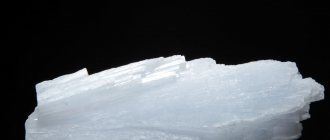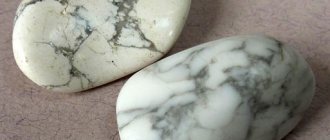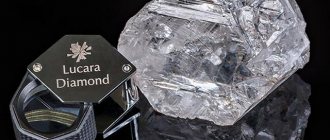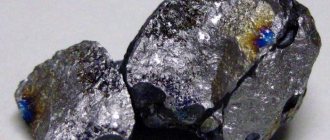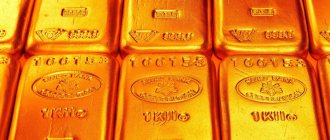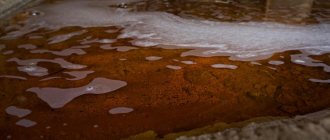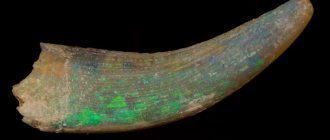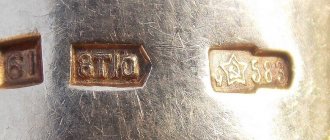Any chemical compound that has two acyl groups bonded to the same oxygen atom.
"Anhydride" redirects here. For inorganic anhydrides, see Acid oxide.
A typical example of a carboxylic anhydride with the functional group shown in blue.
Organic acid anhydride
[
edit
] is an acid anhydride, which is an organic compound.
An acid anhydride is a compound that has two acyl groups bonded to the same oxygen atom. [1] A common type of organic acid anhydride is the carboxylic
, where the parent acid is a carboxylic acid, anhydride formula (RC(O))2O. Symmetric acid anhydrides of this type are named by replacing the word
acid
in the name of the parent carboxylic acid with the word
anhydride
.
[2]Thus, (CH 3 CO) 2 O is called acetic anhydride.
Mixed (or unsymmetrical) acid anhydrides such as acetic formic anhydride (see below) are known, whereby the reaction occurs between two different carboxylic acids. The nomenclature for unsymmetrical acid anhydrides lists the names of both reacted carboxylic acids before the word "anhydride" (for example, the dehydration reaction between benzoic acid and propanoic acid will give "benzoic propanoic anhydride"). [3]
One or both acyl groups of an acid anhydride may also be derived from another type of organic acid, such as a sulfonic acid or phosphonic acid. One of the acyl groups of an acid anhydride may be a derivative of an inorganic acid, such as phosphoric acid. 1,3-bisphosphoglyceric acid mixed anhydride, an intermediate in the formation of ATP through glycolysis, [4] is a mixed anhydride of 3-phosphoglyceric acid and phosphoric acid. Acidic oxides are also classified as acid anhydrides.
Preparation[edit]
Organic acid anhydrides are produced industrially in various ways. Acetic anhydride is primarily produced by carbonylation from methyl acetate. [5] Maleic anhydride is produced by the oxidation of benzene or butane. Laboratory techniques emphasize dehydration of the relevant acids. Conditions vary from acid to acid, but phosphorus pentoxide is a common dehydrating agent:
2 CH 3 COOH + P 4 O 10 → CH 3 C (O) OC (O) CH 3 + "P 4 O 9 (OH) 2"
Acid chlorides are also effective precursors: [6]
CH 3 C (O) Cl + HCO 2 Na → HCO 2 COCH 3 + NaCl
Mixed anhydrides containing an acetyl group are obtained from ketene:
RCO 2 H + H 2 C = C = O → RCO 2 C (O) CH 3
The meaning of the word "anhydrides"
Anhydrides
- this is the name in chemistry for compounds formed by removing the elements of water from hydrates or aqueous oxides, i.e., this kind of body in which hydroxyl groups are present; This removal proceeds in such a way that every two hydroxyls combine to give a particle of water, and the excess oxygen remains in combination with the residue to which the hydroxyl groups were previously adjacent. For example, calcium oxide hydrate Ca(OH) 2 releases water upon strong heating and turns into calcium oxide CaO; one of the hydroxyl groups is removed and immediately attaches to itself the hydrogen of the second group, while the oxygen atom of this latter remains in combination with calcium. Bodies containing only one hydroxyl group cannot directly produce anhydrides. This becomes possible only when two particles of such a compound interact. For example, nitric acid NO 2 OH transforms into an anhydride in such a way that when water is removed, a hydroxyl group leaves one particle and a hydrogen atom leaves the other. The remaining oxygen atom of this last group binds both residues into a new particle NO 2O-O2 N, the so-called nitric anhydride. Hydrates containing more than two hydroxyl groups can lose them either all at once or in parts. Thus, iron oxide hydrate Fe 2(OH)6 can give either a normal product - anhydrous iron oxide Fe 2 O 3, or a compound of this kind where part of the hydroxyl groups remains intact, for example. Fe 2 O 2 (OH) 2; the latter forms of compounds are called partial anhydrides
, or
anhydrohydrates.
One particle of boric acid B(OH) 3 can give one anhydrate BO(OH), while two particles of the same acid give boric anhydride B 2 O 3 = BOOOB, in which the oxygen atom is the connecting link of both residues from each particle of boric acid.
The formation of anhydrides occurs not only for inorganic, but very often also for organic compounds. Thus, two particles of monobasic acetic acid C 2 H 3 O-OH give acetic anhydride and one particle of dibasic succinic acid C 2H4 (COOH) 2 - succinic anhydride ordinary (sulfuric) ester C 4 H 10 O is also an anhydride C 2 H 5 OS 2 H 5 ethyl alcohol C 2 H 5 OH; a case similar to the formation of succinic anhydride will represent the formation, for example, of ethylene oxide from dihydric alcohol, ethylene glycol C 2 H 4 (OH) 2. Due to the enormous variety of forms of organic compounds containing hydroxyl groups, it is possible to form not only complete and incomplete anhydrides or anhydrohydrates, but also entire broad classes of mixed anhydrides
, occurring due to the release of water from hydroxyl groups of various types (alcoholic or acidic); An example of this kind of compounds can be esters for monohydric compounds, and for dihydric (alcoholic acids) - their special form, lactones; Let us point out the acetic ester, which occurs by the release of water at the expense of the hydroxyls of alcohol and acid, their simplest lactone, obtained from γ-hydroxybutyric acid CH 2OH-CH2-CH2 -COOH, and water is released simultaneously from the alcoholic and acidic hydroxyls, and the remaining oxygen atom binds the resulting residues c butyrolactone Some hydrates are so fragile and so easily decompose into water and anhydride under ordinary conditions that their existence is allowed only on the basis of their corresponding derivatives. Thus, it is possible to assume the existence of the hydrate C(OH 4), or orthocarbonic acid, as well as the hydrate of the same acid CO(OH) 2; but both of these hydrates, at the moment of separation in one way or another from the corresponding compounds, decompose into water and carbonic anhydride CO 2; SO(OH)2 hydrate, or sulfurous acid, is equally fragile, and in a free state it decomposes into water and sulfur dioxide SO2. Silicic acid hydrate Si(OH)4, dried at 100°, turns into anhydride SiO2. Orthophosphoric acid PO (OH) 3 upon the strongest calcination gives only the anhydrate POO(OH), while potassium hydroxide KOH remains unchanged at any temperature.
Reactions[edit]
Acid anhydrides are a source of reactive acyl groups, and their reactions and uses resemble those of acyl halides. In reactions with protic substrates, the reactions yield equal amounts of the acylated product and the carboxylic acid:
RC (O) OC (O) R + HY → RC (O) Y + RCO 2 H
for HY = HOR (alcohols), HNR' 2 (ammonia, primary, secondary amines), aromatic ring (see Friedel-Crafts acylation).
Acid anhydrides tend to be less electrophilic than acyl chlorides, and only one acyl group is transferred per acid anhydride molecule, resulting in lower atomic efficiency. However, the low cost of acetic anhydride makes it a common choice for acetylation reactions.
Application - acetic anhydride - Great Encyclopedia of Oil and Gas, article, page 1
Application: acetic anhydride
Page 1
The use of acetic anhydride in an amount of more than 1 G mol usually does not provide a noticeable improvement, since with 2 mol of acetic anhydride the yield increases only by 1 - 3%, and with an even greater excess the yield of relco decreases. The use of an yldiferene solvent, such as toluene or nitrobenzene, causes a noticeable decrease in yield and can even completely stop the reaction. [1]
The use of acetic anhydride as a differentiating solvent, recommended in this work, is of more general analytical interest and deserves wide distribution along with previously proposed solvents. [2]
The use of acetic anhydride is a useful modification in cases where mainly symmetrical alkyl derivatives of urea are formed with glacial acetic acid. [3]
The disadvantage of using acetic anhydride is that aldehydes interfere with the determination of hydroxyl groups. [4]
When using acetic anhydride as a removing agent, the conditions for condensation of formaldehyde with ammonium nitrate are improved. [5]
When using acetic anhydride, one should not forget about the possibility of acylation of hydroxyl and amino groups in the systems under study. [7]
In methods using acetic anhydride, the presence of strong acids (as catalysts) causes a greater number of side reactions compared to non-catalyzed hydrolysis. [8]
The sulfonic oxidation process using acetic anhydride is carried out in a column pre-filled with the original, thoroughly dried paraffin raw material and acetic anhydride. [10]
It was found that when acetic anhydride is used, the reaction leads to the formation of methylenediarsine oxide. [eleven]
When the development of this method was completed, Nozaki [8] reported that the use of acetic anhydride instead of acetic acid eliminated the disadvantages associated with its use as a solvent. It was found that the efficiency of iodometric determination increases as a result of replacing potassium iodide with sodium iodide, which is much more soluble in the reaction mixture, thereby achieving a higher concentration of iodide ion, an increase in the reaction rate and a decrease in the degree of addition of iodine to unsaturated compounds. The accuracy of the analysis also increases when water is removed from the reaction mixture, which promotes the autoxidation of olefins. Lipe, Chapman and Mac Farlane [11] note that water noticeably reduces the results of iodometric determination of fats, and Liebhafsky and Sharkey [4] observed that water slows down the reduction of peroxides by iodide ion. To avoid possible interference from atmospheric oxygen, the reaction was carried out under a carbon dioxide atmosphere, and the sample and reaction mixture were deaerated before analysis, but such precautions are not necessary during normal operation. [12]
Its anhydride can be obtained from the acid by direct distillation in vacuum; however, when using acetic anhydride, a purer preparation is obtained. [13]
When using acetyl chloride, a better yield and a smaller amount of high-boiling residue is obtained than when using acetic anhydride. [14]
When aniline is nitrated in the presence of a weak acid, namely glacial acetic acid, and when acetic anhydride is used as a water-removing agent, 75% o-nitroaniline and 25% p-nitroaniline are formed. [15]
Pages: 1 2
www.ngpedia.ru
Application and appearance of acid anhydrides[edit]
- Illustrative acid anhydrides
- Acetic anhydride is produced on a large scale for many applications.
- Naphthalene tetracarboxylic acid dianhydride, a building block for complex organic compounds, is an example of a dianhydride.
- Maleic anhydride is a cyclic anhydride widely used in industrial coatings.
- ATP in protonated form is an anhydride derived from phosphoric acid.
- The "mixed anhydride" of 1,3-bisphosphoglyceric acid is widely used in metabolic pathways.
- 3′-Phosphoadenosine-5′-phosphosulfate (PAPS) is a mixed anhydride of sulfuric and phosphoric acids and is the most common coenzyme in biological sulfate transfer reactions.
Acetic anhydride is a major industrial chemical widely used to produce acetate esters such as cellulose acetate. Maleic anhydride is a precursor to various resins by copolymerization with styrene. Maleic anhydride is a dienophile in the Diels–Alder reaction. [7]
Dianhydrides, molecules containing two acid anhydride functions, are used to synthesize polyimides and sometimes polyesters and polyamides. Examples of dianhydrides: pyromellitic dianhydride (PMDA), 3,3', 4,4'-oxydiphthalic dianhydride (ODPA), 3,3', 4,4'-benzophenonetetracarboxylic dianhydride (BTDA), 4,4'-diphthalic (hexafluoroisopropylidene) anhydride (6FDA), benzoquinonetetracarboxylic dianhydride, ethylenetetracarboxylic dianhydride. Polyanhydrides are a class of polymers characterized by anhydride bonds that connect the repeating units of the polymer backbone.
Natural products containing acid anhydrides have been isolated from animals, bacteria and fungi. [8][9][10] Examples include cantharidin from blister beetle species including the Spanish fly, Lytta vesicatoria
, and tavtomycin from the bacterium
Streptomyces spiroverticillatus
. The maleidride family of fungal secondary metabolites, which have a broad spectrum of antibiotic and antifungal activity, are alicyclic compounds with maleic anhydride functional groups. [eleven]
Anhydrite. Properties and uses of anhydrite
It dilutes well in ether, but is poorly soluble in water. This is the property of anhydrite. This is a chemical compound in the form of a liquid with a pungent odor.
There are different types of substances - acetic, phosphoric, phthalic anhydrite. The latter, for example, is widely used as plasticizers for polymer materials. At one time, the vinegar type was used for the production of heroin. The chemical reagent helps to obtain acetylated opium from regular opium.
In fact, any anhydrite is a combination of some element with oxygen. The substance is obtained by removing water from various acids. Such is calcium oxide - a solid form of anhydrite. This is a mineral, a special gypsum. Let's figure out why it's special.
Gypsum anhydrite is
In rock anhydrite, calcium oxide is combined with sulfur trioxide, that is, the mineral formula is CaSO4. Sometimes the composition contains an admixture of strontium or cobalt. Accordingly, the color becomes cobalt gray, pale blue, with a purple tint. There are reddish specimens. But, most often found is white and slightly grayish gypsum anhydrite .
The mineral has a greasy, glassy sheen. During fractures, pearlescent radiation appears on the planes of fusion. The increased refraction of light is sometimes facilitated by the complete transparency of the anhydrite. The formula of the stone allows it to be equally watery-transparent and cloudy. But there is no completely matte type of plaster.
On the Mohs scale, stone, like any gypsum, has a hardness of 3-4 points. For comparison, apatite has 5 points. You can scratch it with a knife, but you will have to make an effort. Plaster scratches relatively easily.
Anhydrite formation
If anhydrite solutions are man-made, then the mineral variation is formed in nature. The stone is sedimentary, that is, the components fall out of solutions, settle on surfaces and are compressed. Typically, anhydrite is found in salt deposits in combination with ordinary gypsum. Rarely is the exhalative version of the mineral found, that is, precipitated from gases. Such crystals are found in the voids of volcanic vents.
anhydrite most often originates from salt solutions, they look for the stone in salt deposits. In Russia, deposits are being developed on the Taimyr Peninsula and in the Urals. Many clusters have been found in Germany. Why is special gypsum mined?
Loading…
Applications of anhydrite
The decomposition of anhydrite is a source of sulfuric acid. Low-grade mineral samples are used to obtain it. The rest of the stone is given to the construction industry. Basically, blocks are used as finishing material and raw material for the formation of cement.
In the latter, gypsum is added due to its ability to absorb water. But this ability of the mineral interferes with finishing. The stone is not suitable for placement in bathrooms, swimming pools and other rooms with high humidity.
Anhydrite is also useful in crafts. The stone is easy to process, but strong enough for large volumes of figurines, vases, and boxes. There is even a jewelry, purple variety of anhydrite. It is mined in Canada, in the Ontario deposit.
Gypsum from here can easily be given different cuts. The Peruvian mineral is also valued in jewelry. It is also easily cut and has a rare blue-red color.
Magical and healing properties of anhydrite
Lithotherapists specialize in treatment with stones. They claim that anhydrite can improve memory. Therefore, the mineral is “prescribed”, for example, for people with Alzheimer’s disease. Crystals will not interfere with those who are simply absent-minded, or who are forced to keep a large amount of information in their heads.
Anhydrite is also recommended for fevers, headaches and toothaches. The mineral is kept close to the problem area. So, for migraines, buy earrings with a compound of calcium oxide and sulfur trioxide. Neck pendants are worn for diseases of the thyroid gland. In rings, lithotherapists believe, anhydrite has a beneficial effect on the functioning of the gastrointestinal tract.
Anhydrite is often found near mineral springs and is a source of ions for them. Doctors recommend getting a stone crystal and throwing it into a glass of water every day. By drinking it, you cleanse your body of toxins. Astrologers add that this is best done by those born under the sign of Libra and Aquarius.
tvoi-uvelirr.ru
Analogs [edit]
Nitrogen [edit]
General linear imide functional group
Imides are structurally related analogues in which the bridging oxygen is replaced by nitrogen. They are similarly formed by the condensation of dicarboxylic acids with ammonia. Replacing all the oxygen atoms with nitrogen gives imidines, these are rare functional groups that are very prone to hydrolysis.
Sera [edit]
Sulfur can replace oxygen either in the carbonyl group or in the bridge. In the first case, the name of the acyl group is enclosed in parentheses to avoid ambiguity in the name, [2] for example, (thioacetic) anhydride (CH 3 C (S) OC (S) CH 3 ). When two acyl groups are attached to the same sulfur atom, the resulting compound is called a thioanhydride,[2] for example acetic thioanhydride ((CH3C(O))2S).
Links[edit]
- IUPAC, Compendium of Chemical Terminology
, 2nd ed. (“Golden Book”) (1997). Online revised version: (2006–) "acid anhydrides". DOI: 10.1351/goldbook.A00072 - ^ abc Panico R, Powell WH, Richer JC, eds. (1993). "Recommendation R-5.7.7". Manual of IUPAC Nomenclature for Organic Compounds
. IUPAC/Blackwell Science. pp. 123–25. ISBN 0-632-03488-2. - https://chem.libretexts.org/Bookshelves/Organic_Chemistry/Supplemental_Modules_(Organic_Chemistry)/Anhydrides/Nomenclature_of_Anhydrides
- Nelson, D.L.; Cox, M. M. Lehninger, Principles of Biochemistry, 3rd ed. Worth publishing: New York, 2000. ISBN 1-57259-153-6.
- Zoeller, JR; Agreda, V. H.; Cook, S. L.; Lafferty, Netherlands; Polikhnovsky, S.W.; Pond, D. M. "Eastman Chemical's Acetic Anhydride Process" Catalysis Today (1992), vol. 13, pp. 73-91. DOI: 10.1016/0920-5861 (92) 80188-S,
- Lewis I. Creaman (1988). "Acetic formic anhydride". Organic synthesis
.;
Collection
,
6
, p. 8 - Heimo Held, Alfred Rengstl, Dieter Mayer "Acetic anhydride and mixed fatty acid anhydrides" Ullmann's Encyclopedia of Industrial Chemistry 2002, Wiley-VCH, Weinheim. DOI: 10.1002/14356007.a01_065
- Salim, Muhammad; Hussain, Hidayat; Ahmed, Ishtiaq; Draeger, Siegfried; Schultz, Barbara; Meyer, Catherine; Steinert, Michael; Pescitelli, Gennaro; Kurtan, Tibor; Floerke, Ulrich; Krohn, Karsten (February 2011). "Viburspiran, an antifungal member of the maleic anhydride octadride class of natural products." European Journal of Organic Chemistry
.
2011
(4):808–812. DOI: 10.1002/ejoc.201001324. - Han, Chongguang; Furukawa, Hiroyuki; Tomura, Tomohiko; Fudo, Ryosuke; Kaida, Kenichi; Choi, Bong-Geun; Imokawa, Genji; Ojika, Makoto (April 24, 2015). "Bioactive maleic anhydrides and related diacids from the aquatic hyphomycete Tricladium castaneicola". Journal of Natural Products
.
78
(4):639–644. DOI: 10.1021/np500773s. PMID 25875311. - Heard, David M.; Tyler, Emir R.; Cox, Russell J.; Simpson, Thomas J.; Willis, Christine L. (January 3, 2022). "Structural and synthetic studies of maleic anhydride and related diacid natural products" (PDF). Tetrahedron
.
76
(1): 130717. DOI: 10.1016/j.tet.2019.130717. - Chen, Xiaolong; Zheng, Yugo; Shen, Yinchu (May 2007). "Natural products with the maleic anhydride structure: nonadrides, tautomycin, chaetomella anhydride and other compounds." Chemical Reviews
.
107
(5):1777–1830. DOI: 10.1021/cr050029r. PMID 17439289.
